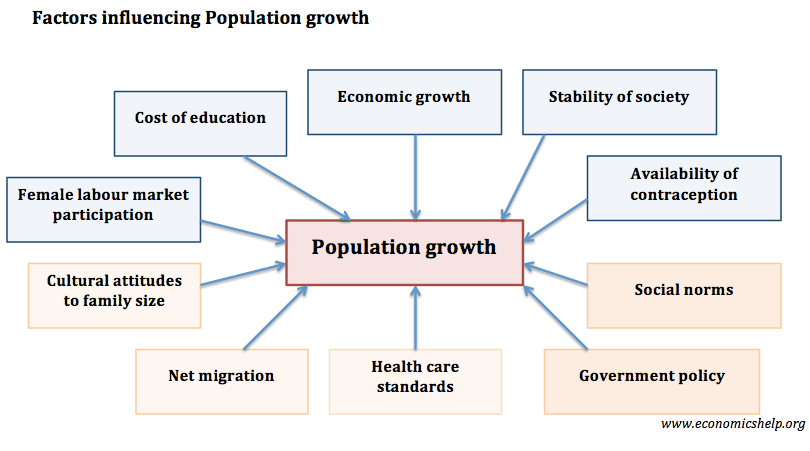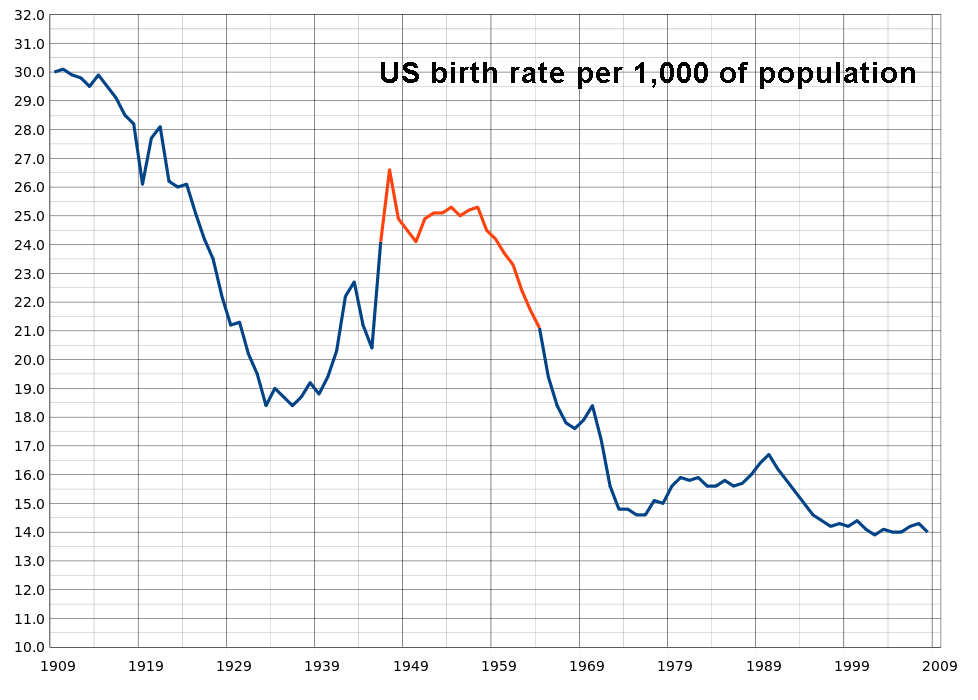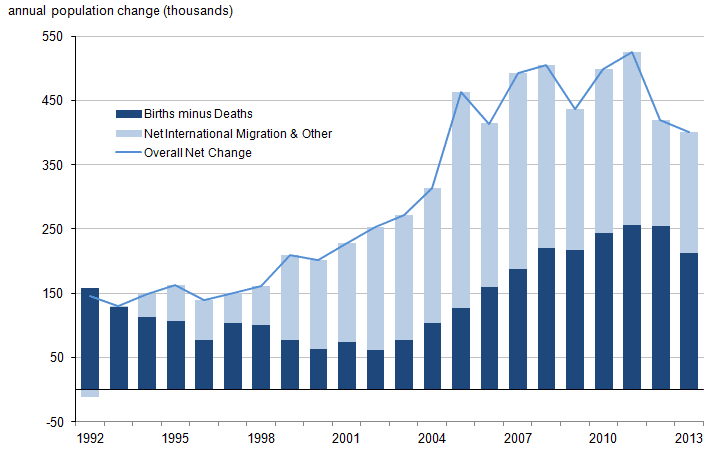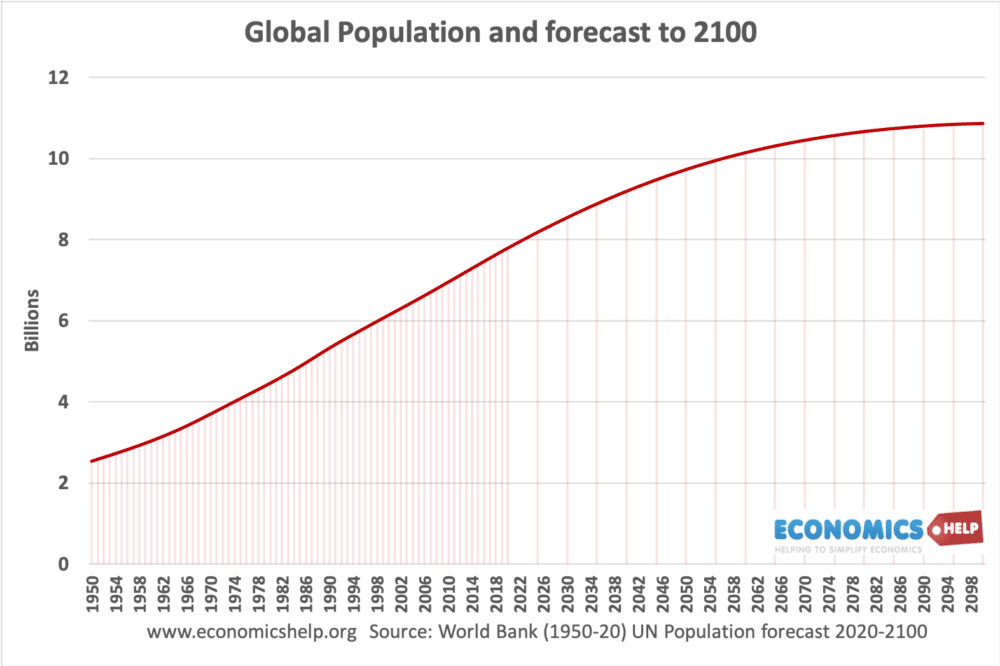What Factors Affect Population Size
Readers question: Explicate the chief factors which touch population size and growth?
Population growth is determined past fertility rates (the number of children per adult) – fatality rates. Birth rates and mortality rates are, in plough, determined by a combination of factors. Oft economic growth and economic development take led to a pass up in population growth, merely there are no hard and fast rules and other factors, such every bit availability of family planning, social expectations and regime intervention can play an important part.

Factors influencing population growth
- Economic development. Countries who are in the early on stages of economic evolution tend to accept college rates of population growth. In agriculturally based societies, children are seen every bit potential income earners. From an early age, they can help with household tasks and collecting the harvest. Too, in societies without country pensions, parents often want more children to deed equally an insurance for their old age. It is expected children will look after parents in old age. Because child mortality rates are oft higher, therefore there is a need to have more children to ensure the parents have sufficient children to await after them in former age.
- Teaching. In developed countries, didactics is unremarkably compulsory until the age of 16. As education becomes compulsory, children are no longer economical assets – but economic costs. In the United states of america, it is estimated a child can cost approx $230,000 past the fourth dimension they leave college. Therefore, the toll of bringing upwards children provides an incentive to reduce family unit size.
- Quality of children. Gary Becker produced a paper in 1973 with H.Gregg Lewis which stated that parents choose the number of children based on a marginal toll and marginal benefit analysis. In developed countries with high rates of return from educational activity, parents have an incentive to have a lower number of children and spend more on their teaching – to give their children not just standard didactics only a relatively amend education than others. To be able to give children the best start in life, information technology necessitates smaller families. Becker noted rising existent GDP per capita was generally consistent with smaller families.
- Welfare payments/State pensions. A generous land alimony scheme means couples don't need to have children to provide an effective retirement support when they are old. Family sizes in developing countries are college because children are viewed as 'insurance' to wait after them in former age. In modern societies, this is not necessary and birth rates fall as a effect.
- Social and cultural factors. Republic of india and China (before i family policy) had strong social attachments to having large families. In the developed globe, smaller families are the norm.
- Availability of family planning. Increased availability of contraception can enable women to limit family unit size closer to the desired level. In the developing globe, the availability of contraception is more limited, and this can lead to unplanned pregnancies and more rapid population growth. In Africa in 2015, it was estimated that only 33% of women had access to contraception. Increasing rates would play a role in limiting population growth. (link)
- Female labour market participation. In developing economies, female education and social mobility are oftentimes lower. In societies where women gain a better instruction, there is a greater want to put piece of work over starting a family. In the developed world, women have oft chosen to go married afterward and filibuster having children (or not at all) considering they prefer to work and concentrate on their career.
- Expiry rates – Level of medical provision. Oft death rates are reduced earlier a slowdown in birth rates, causing a blast in the population size at a sure point in a country'due south economic development. In the nineteenth and early on twentieth century, at that place was a rapid comeback in medical treatments which helped to deal with many fatal diseases. Death rates roughshod and life expectancy increased.
- Immigration levels. Some countries biggest drivers of population growth come from internet migration. In the Great britain from 2000 to 2013, around 50% of cyberspace population growth came from cyberspace international migration. Countries like Japan with very strict immigration laws accept seen a stagnation in the population.
- Historical factors/war. In the post-state of war catamenia, western countries saw a 'boom' in population, as couples reunited at the terminate of the 2d Earth War began having families. The 'baby-boomer' period indicates population growth can be influenced by historical events and a combination of factors which acquired a filibuster in having children until the war ended.

The depressed economic weather condition of 1929-39 caused a low birth rate. In the 10 years after the finish of the Second Globe War, in that location was a fasten in birth rates before falling to record low.
Population growth in the Uk

Different UK population projections based on pocket-sized changes in fertility rates and also different levels of migration.
Global Population

Is population growth a good thing?
Related
- Population trends and forecasts
- Pros and cons of population growth
External links
- Homo Population Growth
You can read more than at our privacy page, where yous tin can modify preferences whenever yous wish.
What Factors Affect Population Size,
Source: https://www.economicshelp.org/blog/469/development/factors-effect-population-size-and-growth/
Posted by: reavesothopel.blogspot.com


0 Response to "What Factors Affect Population Size"
Post a Comment